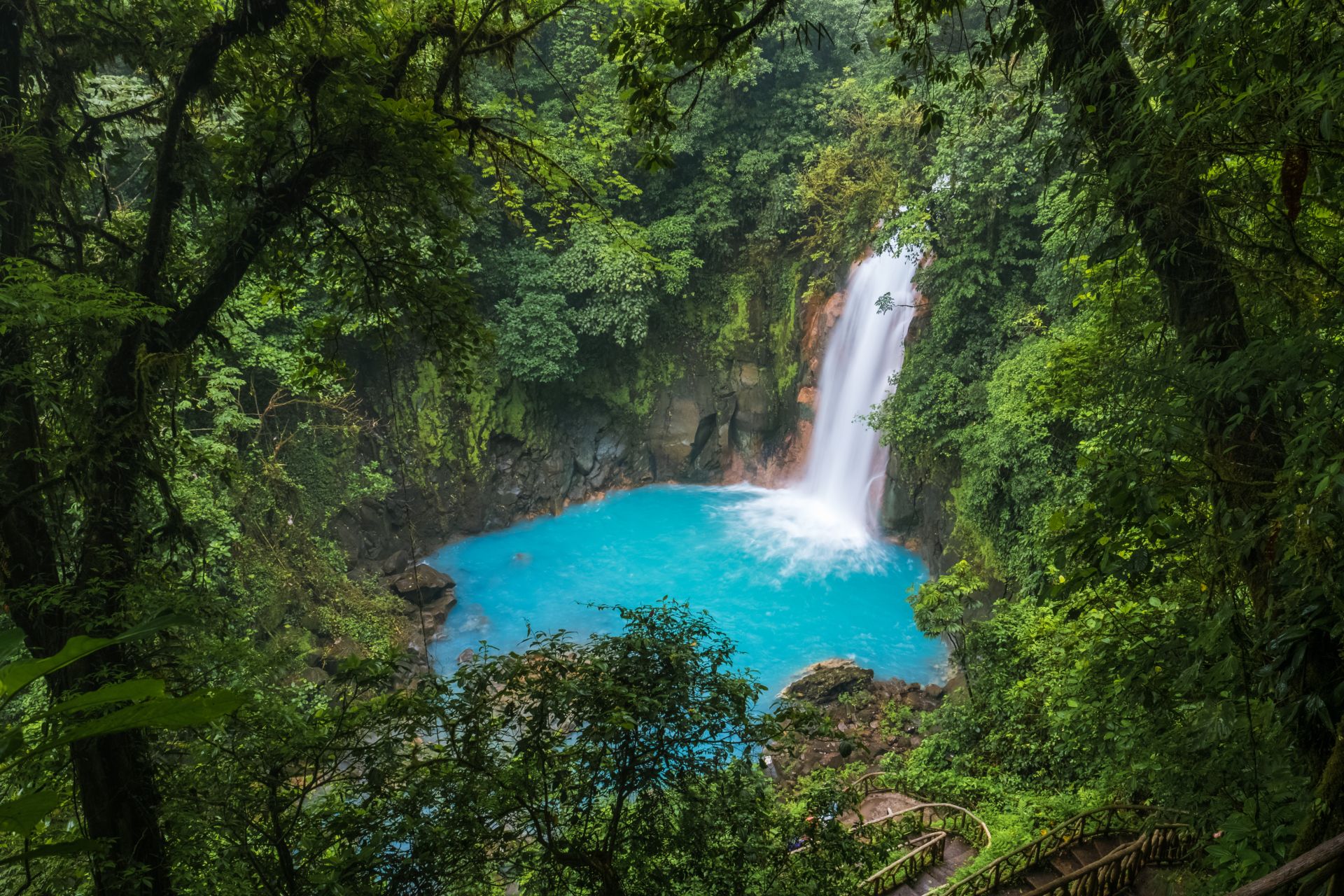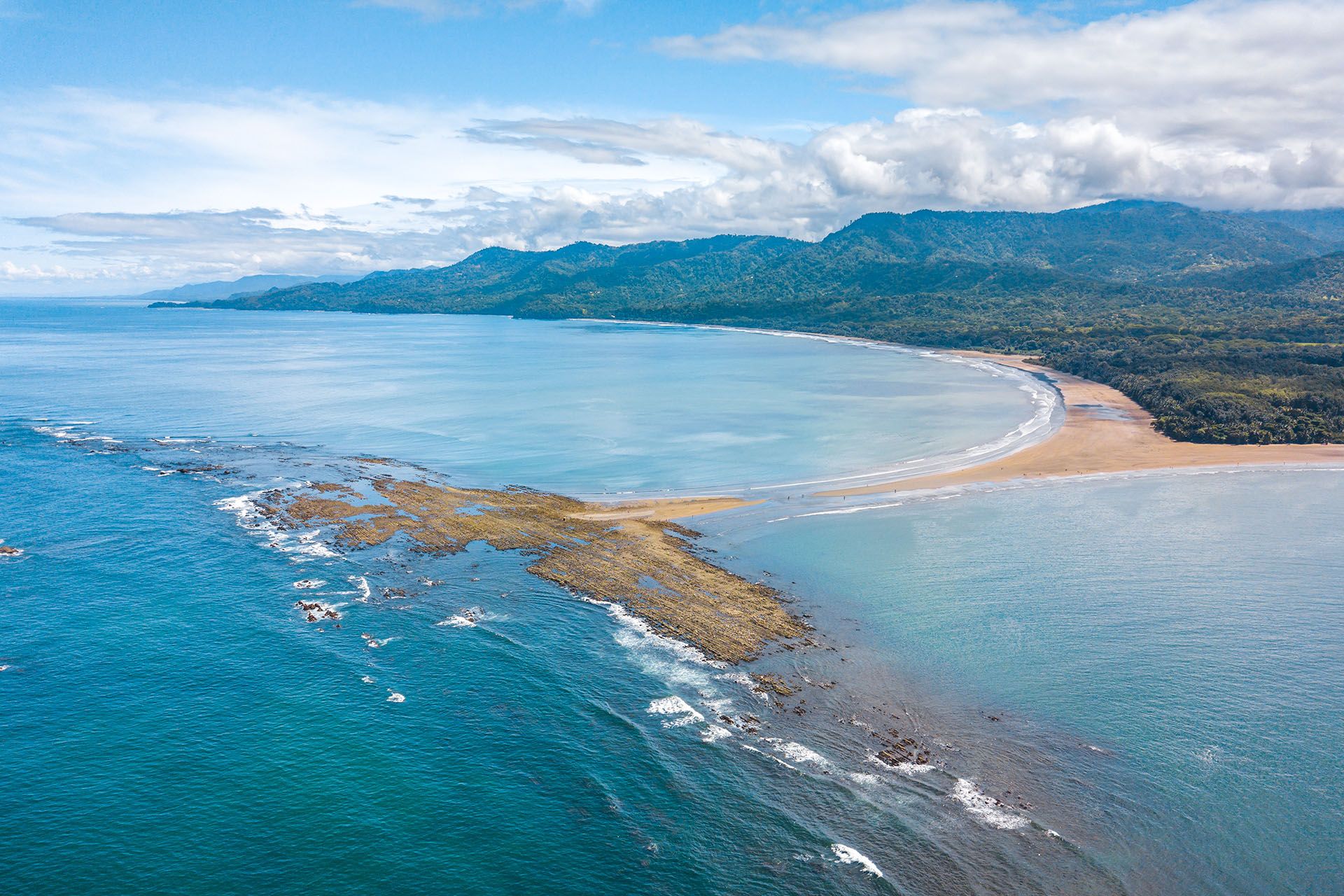For turtle-spotting: Santa Rosa National Park - one of the most popular Costa Rica national parks
Established in 1971 to protect a stretch of increasingly rare, dry tropical forest, Santa Rosa National Park (also known as the Santa Rosa sector), is the oldest among Costa Rica national parks. Today it’s also one of the most popular Costa Rica national parks, thanks to its good trails, great surfing (though poor swimming) and prolific turtle-spotting opportunities.
It’s also, given a few official restrictions, a great destination for campers, with a site on the beach. Santa Rosa has an amazingly diverse topography for its size, ranging from mangrove swamps to deciduous forests and savannahs. Home to 115 species of mammal, 250 species of bird and 100 amphibians and reptiles, Santa Rosa is a rich biological repository, attracting researchers from all over the world.
The appearance of the park changes drastically between the dry season, when the many streams and small lakes dry up, trees lose their leaves, and thirsty animals can be seen at known water holes. The wet months, which are greener, afford fewer animal-viewing opportunities.
From July to November, you may be able to witness hundreds of olive ridley turtles (tortugas lloras) dragging themselves out of the surf and nesting on Playa Nancite by moonlight. September and October are the months in which you are most likely to see them.
Where to stay:
- Cabina Casa Soley offers accommodation in Puerto Soley with free WiFi and garden views. Located 2.9 km from Puerto Soley Beach, the property provides a garden and free private parking. Parque Nacional Santa Rosa is 19 km from the country house, while Junquillal Bay Wildlife Refuge is 8 km away.
What to do:
- Charter a 50ft on this sailboat tour with snorkelling to experience sailing in Potrero Bay. Work with the captain to find anchorages for snorkeling or fishing and enjoy the open bar and delicious locally sourced food.
Our favourite tailor-made trip:
- On this tailor-made trip to Tropical Costa Rica you will visit volcanoes, take a dip in hot springs, drift lazily along the country’s waterways and seek out wildlife in tropical lowland forest. Costa Rica’s diverse ecosystem beholds a whole host of natural treasures.
For the best hiking and horseriding: Rincón de la Vieja National Park
Rincón de la Vieja National Park is utterly dominated by its massive and majestic namesake volcano, a perfectly proportioned conical peak, and one of Costa Rica's most active volcanoes. In the park’s eastern sector, the crater of Volcán Santa María is impressive in its own right, even if it’s not quite as visually arresting.
The beautifully dry landscape encompasses terrains varying from rock-strewn savannah to patches of tropical dry forest and it’s undeniably an enchanting place, with quite simply the best hiking and horseriding in the country. A variety of elevations and habitats reveals hot springs, sulphur pools, bubbling mud pots, fields of guaria morada plus a great smoking volcano at the top to reward you for your efforts.
Animals in the area include all the big cats (just don’t expect to see them), the shy tapir, red deer, collared peccary, two-toed sloth, and howler, white-faced and spider monkeys. There’s a good chance you will see a brilliant flash of fluttering blue – this is the Blue Morpho butterfly, famous for its electric colours.
Birders will enjoy the profusion of over two hundred species in residence, and may spot the weird-looking three-wattled bellbird, the Montezuma oropendola, the trogon and the spectacled owl, among others.
In our guide to the best hikes in Costa Rica you'll find even more options to stretch your legs in Costa Rica.












